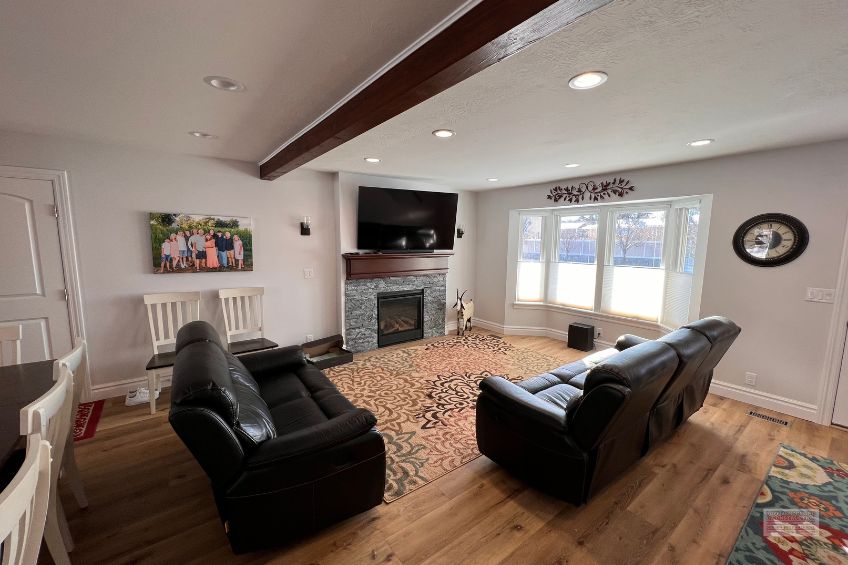Call Us : (801) 293-9014
info@toppconstruction.comMONDAY - FRIDAY
8:00 AM to 5:00 PM
8:00 AM to 5:00 PM

In recent years, there has been a notable shift in the way homeowners approach remodeling projects. Beyond mere aesthetics and functionality, there is a growing emphasis on sustainability. This trend is particularly evident in the choice of materials used in home renovations. More and more homeowners in Utah and beyond are opting for natural and sustainable materials such as reclaimed wood, bamboo flooring, and eco-friendly paints.
Reclaimed Wood: One of the most striking elements of sustainable home remodeling is the use of reclaimed wood. This material, sourced from old barns, factories, and other structures, brings a sense of history and character to modern homes. Each piece of reclaimed wood tells a story through its weathered appearance and unique imperfections, making it a popular choice for feature walls, flooring, and even furniture. Beyond aesthetics, using reclaimed wood reduces the demand for new timber, helping to conserve forests and reduce carbon emissions associated with logging and processing new wood.
Bamboo Flooring: Bamboo has gained popularity as a flooring material due to its sustainability and durability. Unlike traditional hardwoods, bamboo is a fast-growing grass that can be harvested without killing the plant, allowing for rapid replenishment. Bamboo flooring is known for its strength, resilience to moisture, and natural beauty. It comes in a variety of styles and finishes, making it a versatile option for both modern and traditional home designs. Choosing bamboo over hardwood contributes to environmental conservation efforts by reducing deforestation and promoting sustainable agriculture practices.
Low-VOC and Zero-VOC Paints: Traditional paints can emit volatile organic compounds (VOCs) that contribute to indoor air pollution and can be harmful to human health and the environment. In response, eco-friendly paints formulated with low or zero VOCs have gained popularity among conscientious homeowners. These paints are available in a wide range of colors and finishes, ensuring that you don't have to compromise on style while making an eco-conscious choice. Using low-VOC or zero-VOC paints not only improves indoor air quality but also supports sustainable practices in the manufacturing and disposal of paint products.
Choosing natural and sustainable materials for home remodeling goes beyond environmental considerations. These materials often offer superior quality, durability, and aesthetic appeal compared to their conventional counterparts. Reclaimed wood adds a sense of warmth and authenticity to living spaces, while bamboo flooring provides a sleek and contemporary look that complements various interior styles. Eco-friendly paints offer the same coverage and color options as traditional paints but with the added benefit of being safer for your family and the planet.
As homeowners in Utah and across the globe become more environmentally aware, the demand for natural and sustainable materials in home remodeling is expected to continue rising. This shift isn't just a passing trend; it reflects a broader commitment to creating healthier living environments and reducing our ecological footprint. By choosing materials like reclaimed wood, bamboo flooring, and eco-friendly paints, homeowners can contribute to sustainable practices without compromising on style or comfort.
Natural and sustainable materials are not only reshaping the landscape of home remodeling but also paving the way for a more sustainable future. Whether you're renovating a kitchen, updating a bathroom, or transforming your entire home, consider incorporating these eco-friendly options to enhance both the beauty and sustainability of your living space. Together, we can build homes that not only reflect our personal tastes but also respect and preserve the natural world around us.